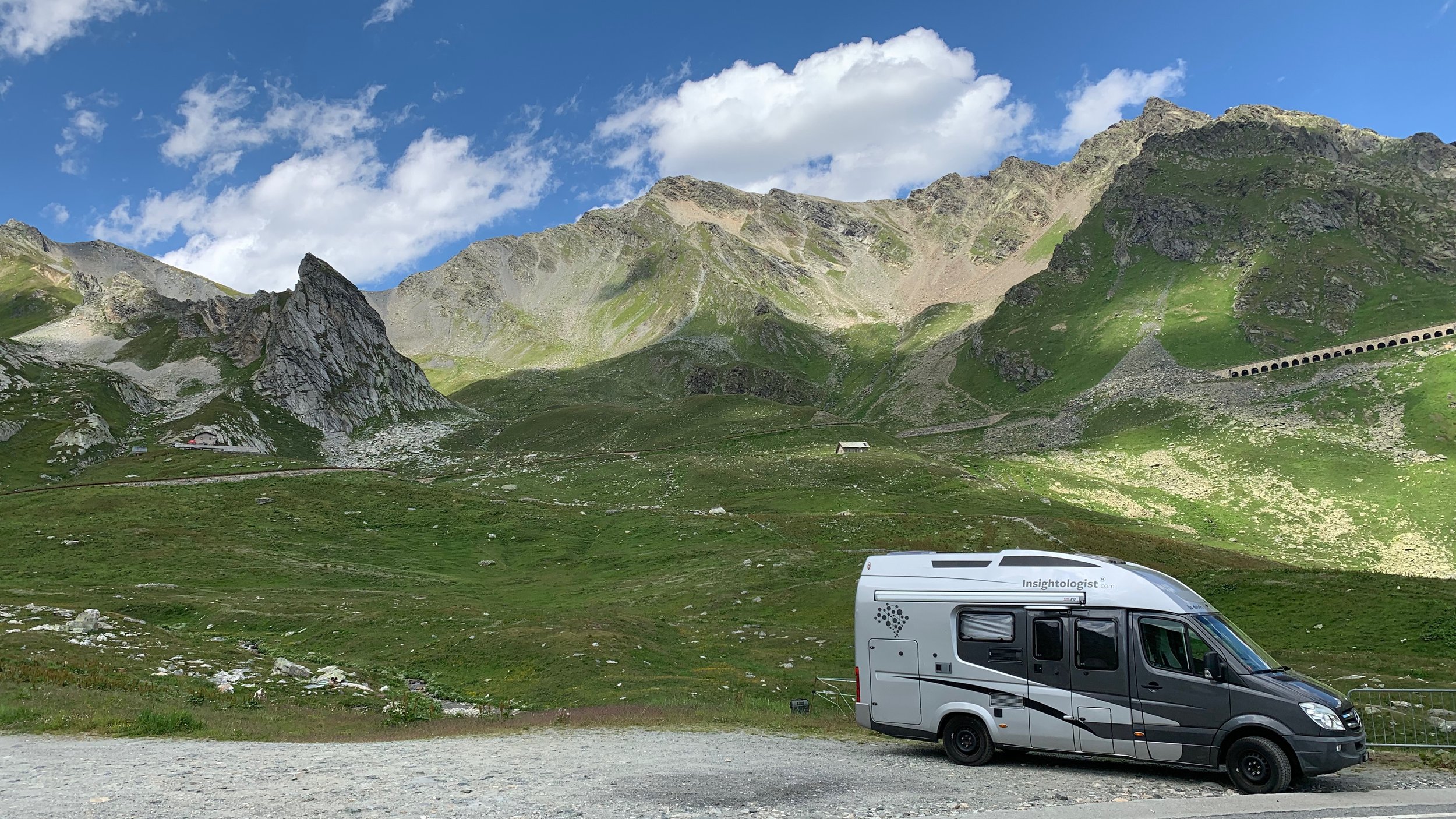Great St. Bernard Pass.
When weather permits I propose the pass road down south, crossing Great St. Bernard. It takes about an hour longer than the tunnel but it’s totally worth it and you might just as well add a prolonged break.
If you’re lucky you can join lunch with some marmots next to the road.
A little bit about the history of Great St. Bernard pass
Archaeological finds along the northern approach probably prove that the Great Saint Bernard was used as early as the Iron Age, making it one of the oldest Alpine crossings. In Roman times, the pass was the direct link to Gaul and the Rhine, as Julius Caesar mentions in his "De bello Gallico". It was developed as a road under Emperor Claudius (d. 54 A.D.). Unlike the other Alpine crossings used by the Romans, the Great Saint Bernard did not require the crossing of difficult gorges and rocky barriers.
In the Middle Ages, the pass was important not only for secular and ecclesiastical dignitaries, merchants and crusaders, but also for pilgrims from the Frankish Empire to Rome (Via Francigena), as documented in a travel report by the English archbishop Sigerich the Ernest of Canterbury around 994 AD.
After a temple dedicated to the god Poeninus (Celtic god) had already existed on the summit in Roman times, around 1050 A.D., according to legend, Bernard of Menthon, archdeacon of Aosta, built a hospice to help all travelers. He was venerated as a saint and since the 13th century the pass (Mont-Saint-Bernard) is named after him. Significant donations, especially from the Counts and Dukes of Savoy from the 12th century, created the economic basis of the hospice, which was then taken over and run by the Augustinian Canons Regular. The hospitality of the canons, which lasted for centuries, is still famous far beyond the borders. In the same breath, the world famous Berhardin breed should be mentioned.
The interregional transit trade began in the 13th century, which led to the development and prosperity of the stage towns. Sembrancher, Bourg-Saint-Pierre, La Cantine de Proz were called "transit places". In these places, transit goods were taken over by local people and transported over the pass by wagons, pack animals or even on human backs. Until 1808, road tolls and customs duties were collected in the various Susten. In 1803, the construction of the Mont Cenis pass rivaled the great Saint Bernard. For several centuries, the pass was of great political importance, bringing wealth and prosperity to the Valais. The military importance of the pass was also recognized in the 17th century. In May 1800, the Napoleonic reserve army (more than 30,000 men) crossed the pass in a forced march and intervened in the fighting in Lombardy. In 1906, the border between Italy and Switzerland was finally settled. From the end of the 18th century, the pass became a great scientific observation and experimentation area. The canons, in particular Laurent Joseph Murith ("Guide du botaniste qui voyage dans le Valais", 1810), supported these activities. Horace Bénédict de Saussure devoted himself mainly to geological and meteorological studies.
In 1839, the Valais Cantonal Council authorized the construction of a road, which was completed in 1893, but not until 1905 on the Italian side. The idea of a year-round tunnel under the Col de Menouve was first mooted in the mid-19th century. In 1938, the cantonal government of Valais granted a concession for such a construction. Fierce opposition (from the federal authorities, Simplon supporters, SBB, etc.) delayed construction until 1958. The first transalpine road tunnel in Europe at the time (5.85 km) was inaugurated on April 13, 1964. The development of freight and passenger traffic continued to grow. Today, however, the opening of the Gotthard tunnel in 1980 has reduced its original importance. However, the "Barry" will remain for the time being as an advertising medium for the pass and the entire region.




